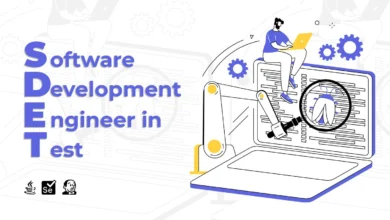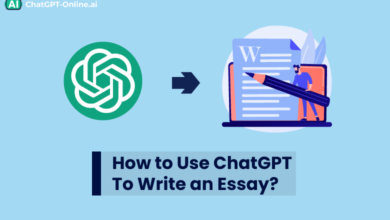What is ChatGPT API? How to Access & Use it? [Complete Guide]
Explore the Capabilities of the ChatGPT API and Learn How to Use ChatGPT API with Python and Curl?

ChatGPT has become an increasingly popular tool for developers and businesses to integrate OpenAI’s advanced language model into their applications. Whether you want to create a chatbot, generate content, or assist with language-related tasks, ChatGPT API offers a wide range of functionalities that can add value to your applications. On July 06, 2023, OpenAI announces the general availability of GPT-4 API to their customers.
Looking to create your own chatbot using ChatGPT powers or develop new applications with it? In this article, we’ll explore what Chat GPT API is and learn how to access and use ChatGPT API Keys through our step-by-step guide. So, Let’s start!
Table of Contents:
What is ChatGPT API?
ChatGPT API is a cloud-based application programming interface that allows developers to access and interact with OpenAI’s language models, including GPT-3 and the latest addition, GPT-4. With its natural language processing (NLP) capabilities and ability to understand and generate human-like text responses, Chat GPT API allows for the integration of intelligent conversational interfaces into various applications, such as chatbots, mobile apps, and virtual assistants.
How do I get ChatGPT API Key?
To use ChatGPT API, you need to obtain an API key from OpenAI. Here’s a step-by-step guide on how to get an API key for ChatGPT:
Step 1: Create an OpenAI account
Visit https://chat.openai.com/auth/login and click on the “Sign up” button to create an OpenAI account. You can either enter your email address and password or sign up using your Google or Microsoft account.
Step 2: Log in to your OpenAI account
Once you have successfully created an account, log in to – https://platform.openai.com/account/api-keys using your credentials.

Step 3: Apply for API access
Go to the API keys page and click on the “Create new secret key” button to apply for API access. Make sure to securely save the secret key as it won’t be visible again through your OpenAI account. In case of loss, you will need to generate a new one.

Step 4: Copy your ChatGPT API key
After successfully obtaining an API key, copy it to start leveraging the language processing capabilities of ChatGPT in your application. Remember to keep your API key confidential and avoid sharing it with others, as OpenAI may automatically rotate any leaked API keys.
Step 5: Revoking your API key
If you need to revoke your API key, you can do so by clicking on the “Revoke key” button. This will immediately disable the key, and any API requests made with it will be rejected. Please note that revoked keys cannot be viewed or modified. Additionally, if you belong to multiple organizations, you can set a default organization for making API requests.
Step-by-Step Guide on How to Use ChatGPT API
Once you have obtained an API key for ChatGPT, you can start using it in your applications. Here’s a step-by-step guide on how to use ChatGPT API effectively:
- Set up the API: To start, you need to set up the API by making an HTTP POST request to the API endpoint with your API key and the appropriate headers. You can find the endpoint and header information in the API documentation provided by OpenAI.
- Structure your prompt: Craft your prompt carefully to provide clear instructions to the model. You can use a system message to set the behavior of the assistant, followed by alternating user and assistant messages to create a conversation-like structure.
- Send the request: Send your prompt as a JSON object in the request body to the API endpoint. Make sure to follow the guidelines and formatting requirements specified in the API documentation.
- Receive and process the response: Once you send the request, you will receive a response in JSON format. Extract the generated text from the response and process it as needed in your application.
- Iterate and optimize: Experiment with different prompts, instructions, and parameters to optimize the performance of ChatGPT API for your specific use case. Iterate and fine-tune your prompts to get the desired output.
Advanced Features and Customization Options of ChatGPT API
Chat GPT API offers advanced features and customization options that allow you to fine-tune the behavior of the model according to your requirements. Some of the notable features include:
- Temperature: You can adjust the temperature parameter to control the randomness of the generated text. Higher values (e.g., 0.8) result in more randomness, while lower values (e.g., 0.2) make the text more focused and deterministic.
- Max tokens: You can set the max tokens parameter to limit the length of the generated text. Be cautious not to set it too low, as it may result in incomplete or nonsensical responses.
- System message: Utilize the system message effectively to guide the model’s behavior throughout the conversation. Experiment with different system messages to get the desired output.
- User and assistant messages: Craft user and assistant messages carefully to provide clear instructions and context to the model. Experiment with different message formats and content to optimize the responses.
- Customization: OpenAI provides options for fine-tuning the model using your own data, which allows you to customize the behavior of ChatGPT API according to your specific requirements.
Cost of Using ChatGPT API
Below are the Chat GPT API pricing for the GPT-3.5 and GPT-4 models.
| GPT-3.5 | ||
| Model | Usage | |
| GPT 3.5 Turbo | $0.002/ 1K tokens | |
| GPT-4 | ||
| Model | Prompt | Completion |
| 8K context | $0.03/ 1K tokens | $0.06/ 1K tokens |
| 32K context | $0.06/ 1K tokens | $0.12/ 1K tokens |
How to Use Chat GPT API with Python?
Are you eager to explore the power of ChatGPT and leverage its capabilities through Python? We will walk you through all the necessary steps to utilize the ChatGPT API effectively. By following these steps, you can seamlessly integrate ChatGPT into your Python code, eliminating the need to navigate to the ChatGPT website for every query.
Step 1: Create an Account and Log In
To begin, you need to create an account on OpenAI’s platform and log into your account. This will grant you access to the necessary tools and resources for using the ChatGPT API.
Step 2: Obtain API Keys
After logging in, locate the ‘Personal’ option on the top-right side of the screen. Click on it, and then select ‘View API keys’ as shown below:
Step 3: Generate and Save the Secret Key
Upon following Step 2, you will be redirected to a page displaying your API keys. To generate a new secret key, click on the ‘Create new secret key’ button. Once the key is generated, make sure to copy and save it in a secure location, such as a Notepad file. You will need this key for the upcoming steps.
Step 4: Set Up the Development Environment
Now, it’s time to set up your code editor or choose an online notebook environment such as Google Colab or Jupyter Notebook. In this guide, we will use Google Colab as an example. Begin by installing the OpenAI library in Python using the following command:
| python |
| !pip install -q openai |
If you are using a different code editor, you can install the OpenAI library by executing the following command in your terminal or command prompt:
| python |
| pip install openai |
Step 5: Import the OpenAI Library and Store the Secret Key
After installing the OpenAI library, import it into your Python code. Next, store the secret key you generated in Step 3 in a variable, as shown below:
| python |
| import openai openai.api_key = ‘YOUR_API_KEY’ |
Make sure to replace 'YOUR_API_KEY' with the actual secret key you obtained.
Step 6: Set the Context for the ChatGPT API
To instruct the ChatGPT API on its purpose, you need to define a context using a JSON file. In this case, we set the role as ‘system’ to indicate that we are creating an assistant for users. Additionally, we define the content of the assistant.
| python |
| messages = [{“role”: “system”, “content”: “You are an intelligent assistant.”}] |
Feel free to modify the content to suit your requirements.
Step 7: Initiate the ChatGPT API Interaction
Now, let’s proceed with the code responsible for interacting with the ChatGPT API. By utilizing an infinite while loop, we can engage in a continuous chat without repeatedly executing the code. The following lines of code demonstrate the process:
| python |
| while True: message = input(“User: “) if message: messages.append({“role”: “user”, “content”: message}) chat = openai.ChatCompletion.create(model=”gpt-3.5-turbo”, messages=messages)reply = chat.choices[0].message.content print(f”ChatGPT: {reply}”) messages.append({“role”: “assistant”, “content”: reply}) |
In the code snippet above, the user’s input is captured and stored in the message variable. If a user inputs a question or If a user inputs a question, it enters the if condition. A JSON file is created and appended to the messages list, which we defined in Step 6. This JSON file contains the user’s message. The code then generates a chat response using the openai.ChatCompletion.create() function.
The reply from ChatGPT is stored in the reply variable and printed using the print() function. Finally, the assistant’s reply is appended to the messages list.
Complete Implementation
Here’s the complete implementation of the code:
| python |
| import openai openai.api_key = ‘YOUR_API_KEY’ while True: reply = chat.choices[0].message.content |
Remember to replace 'YOUR_API_KEY' with your actual secret key.
Python ChatGPT Output
After running the code, you can input any query. For example, you can ask questions like “What is GeeksforGeeks?” The ChatGPT model will respond, and since the while loop is infinite, it will continue to prompt for user input, allowing you to have a conversational interaction.

By following these steps, you can seamlessly integrate the ChatGPT API into your Python code and enjoy the benefits of conversing with the powerful ChatGPT model.
How to Use ChatGPT API with Curl?
By leveraging curl, you can seamlessly integrate ChatGPT into your apps. Here is the simple and easy process:
Step 1: Generate API Key for ChatGPT
To begin, follow these steps to generate your API key:
- Access the OpenAI website: https://beta.openai.com/
- Log in using your preferred method, such as Google sign-in.
- Navigate to the “View API keys” section.
- Click on “Create new secret key.”
- Your unique API key will be generated.
Step 2: Running ChatGPT with Curl
Now that you have your API key, you can use curl to interact with ChatGPT. Here’s an example of a curl statement:
| shell |
| curl –location –insecure –request POST ‘https://api.openai.com/v1/chat/completions’ \ –header ‘Authorization: Bearer [YOUR API KEY]’ \ –header ‘Content-Type: application/json’ \ –data-raw ‘{ “model”: “gpt-3.5-turbo”, “messages”: [{“role”: “user”, “content”: “What is the OpenAI mission?”}] }’ |
Upon executing this command, you will receive a response, but it may not be easily readable due to mixed unnecessary information. To overcome this, we recommend using jq to format and filter the response to display only the answer words.
To install jq, you can use the following command:
| shell |
| brew install jq |
Formatting the Response
To format the response and filter out only the answer words, modify the curl statement as follows:
| shell |
| curl –location –insecure –request POST ‘https://api.openai.com/v1/chat/completions’ \ –header ‘Authorization: Bearer [YOUR API KEY]’ \ –header ‘Content-Type: application/json’ \ –data-raw ‘{ “model”: “gpt-3.5-turbo”, “messages”: [{“role”: “user”, “content”: “What is the OpenAI mission?”}] }’ | jq |
Remember to replace [YOUR API KEY] with your actual API key. By executing this updated command, you will obtain a formatted response that allows for better readability and comprehension of the answer provided.
Extracting the Answer
If you prefer to extract only the “answer” from the response, you can further refine the curl statement using jq:
| shell |
| curl –location –insecure –request POST ‘https://api.openai.com/v1/chat/completions’ \ –header ‘Authorization: Bearer [YOUR API KEY]’ \ –header ‘Content-Type: application/json’ \ –data-raw ‘{ “model”: “gpt-3.5-turbo”, “messages”: [{“role”: “user”, “content”: “What is the OpenAI mission?”}] }’ | jq ‘.choices[].message.content’ |
Again, make sure to replace [YOUR API KEY] with your unique API key. This modified command will provide you with a filtered answer, making it even easier to integrate ChatGPT into your applications.
Best Practices for Using Chat GPT API
Here are some best practices to keep in mind when using ChatGPT API:
- Experiment with different prompts and parameters to fine-tune the output.
- Review the API documentation and guidelines provided by OpenAI for optimal usage.
- Always handle API responses properly and extract the required information.
- Test your prompts and parameters to ensure the generated text meets your expectations.
- Keep track of API usage and stay within the limits of your API subscription.
- Stay up-to-date with any updates or changes to the Chat GPT API documentation or guidelines.
- Follow best practices for securing and protecting your API key to prevent unauthorized access.
Conclusion
The ChatGPT API is a powerful tool that allows you to integrate ChatGPT into your applications, products, or services. By following best practices, optimizing your prompts, and providing clear instructions, you can harness the full potential of the Chat GPT API to create engaging conversational experiences.
So, why wait, get your ChatGPT API key today and start building conversational AI applications that can enhance and boost your business and productivity to new heights.
 “Thanks for reading this article about the Chat GPT API. We hope you like this article published by chatgpt-online.ai. Check more interesting and useful articles in the Blog section. If you have any questions and feedback, comment below and we’ll get back to you as soon as we can.”
“Thanks for reading this article about the Chat GPT API. We hope you like this article published by chatgpt-online.ai. Check more interesting and useful articles in the Blog section. If you have any questions and feedback, comment below and we’ll get back to you as soon as we can.”FAQs:
Can I use ChatGPT API for free?
ChatGPT API is not available for free and requires a valid API key obtained from OpenAI. Make sure to review the pricing and subscription plans provided by OpenAI for details on the cost associated with using ChatGPT API.
Can I customize the behavior of Chat GPT API?
While ChatGPT API provides customization options, fine-tuning the model requires expertise in machine learning and training data. Make sure to review the fine-tuning guidelines provided by OpenAI before attempting to customize the model.
What are some use cases of ChatGPT API?
Chat GPT API can be used for a variety of use cases, including chatbots, content generation, customer support, virtual assistants, and more. Its versatility makes it suitable for a wide range of applications that require natural language generation capabilities.



